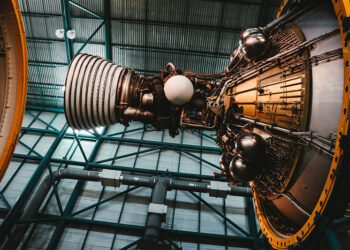In an age defined by rapid technological advancements, the aviation industry is no exception. India, a hotspot for tech innovations, is integrating these developments into its aviation landscape. “The new age of air travel is less about the destination and more about the digitally-enhanced journey.”
1. The Digitalization of Airports
Smart Check-ins: Gone are the days of long queues. Automated check-in kiosks and facial recognition systems ensure a seamless boarding process.
Interactive Terminals: Augmented reality (AR) and virtual reality (VR) tools assist passengers, guiding them through the airport or providing immersive entertainment during layovers.
2. In-flight Connectivity and Entertainment
Wi-Fi Above the Clouds: High-speed internet access at cruising altitudes ensures that passengers remain connected even when they are miles above the ground.
Personalized Experience: Machine learning algorithms curate a customized entertainment palette for passengers based on their preferences, revolutionizing in-flight leisure.
3. Enhanced Safety and Maintenance with IoT
Real-time Monitoring: Internet of Things (IoT) sensors on aircraft components relay real-time data, predicting potential malfunctions and enhancing safety protocols.
Automated Maintenance: AI-driven systems schedule maintenance tasks, reducing ground time and ensuring optimal aircraft health.
4. Sustainable Solutions Through Tech
Fuel Optimization Software: Advanced algorithms calculate optimal fuel loads and flight paths, promoting fuel efficiency and reducing emissions.
Virtual Training Modules: AR and VR-powered training modules provide pilots and crew with realistic training scenarios, enhancing preparedness.
5. Personalized Travel Experiences
Tailored Travel Packages: Airlines utilize data analytics to offer passengers tailored travel packages, including hotel bookings, local experiences, and more.
Instant Feedback Mechanisms: Through integrated apps, passengers can provide real-time feedback, ensuring airlines can address concerns promptly.
6. Robotics and Automation on the Ground
Robot Assistants: Some airports, pioneering the next phase of automation, employ robots for tasks ranging from luggage handling to assisting passengers with queries.
Automated Ground Vehicles: Driverless buses and trolleys for passenger transit within airport premises are becoming a reality, optimizing efficiency.
7. Air Traffic Management in the Digital Age
Predictive Analysis: Advanced systems now forecast air traffic congestion, helping controllers manage traffic more effectively and safely.
Remote Air Traffic Control: Digital towers and remote systems allow for air traffic management from centralized locations, even for multiple airports.
Conclusion
Air travel, once marked by the simple thrill of flight, is now an amalgamation of cutting-edge technologies aimed at enhancing user experience, safety, and sustainability. As India propels its aviation sector into this tech-driven era, it’s evident that the future of air travel is not just about flying; it’s about elevating the entire journey.



















